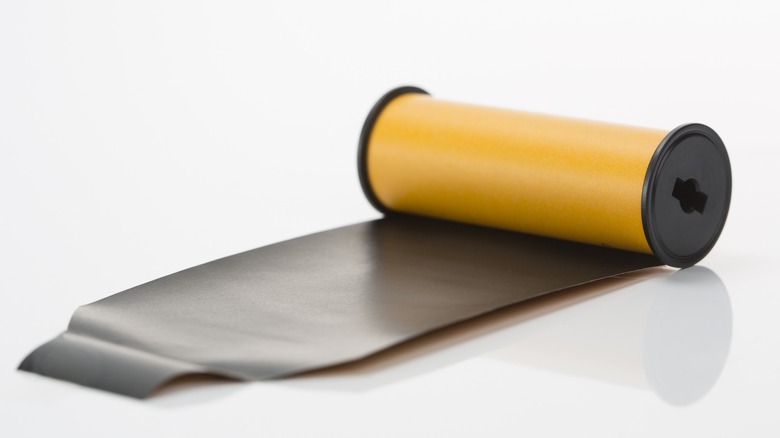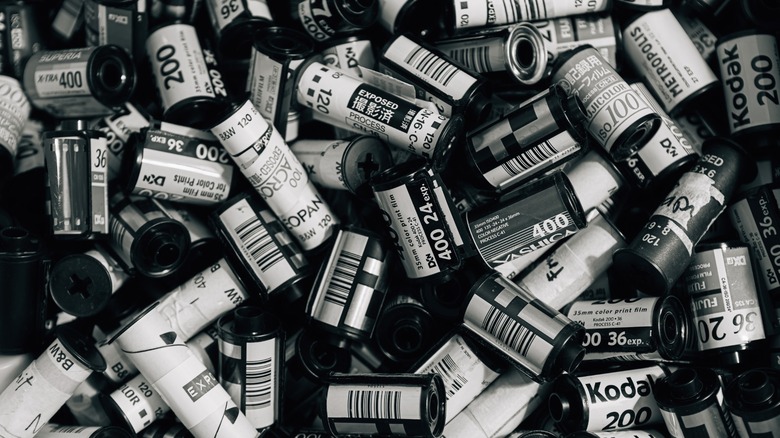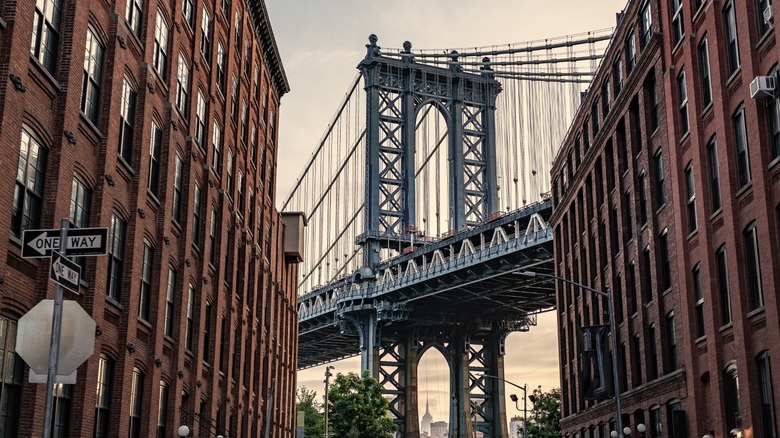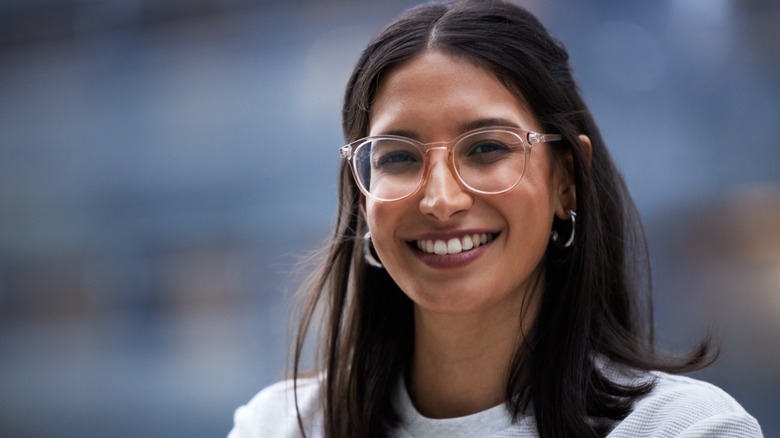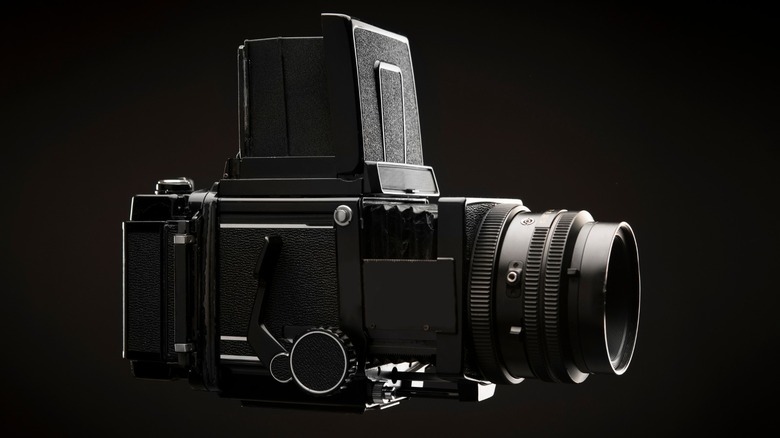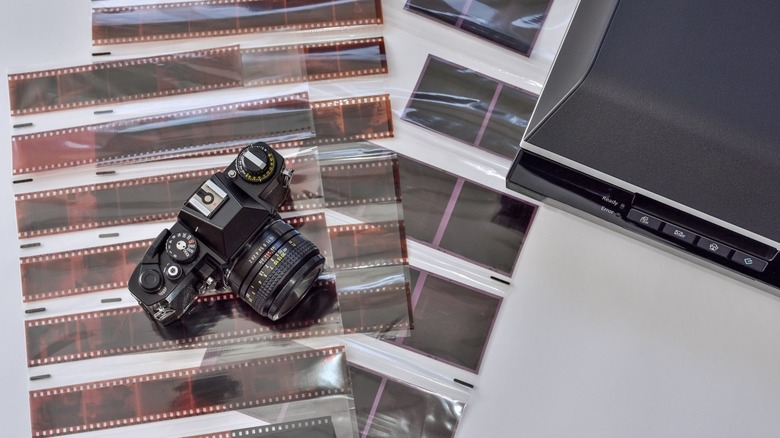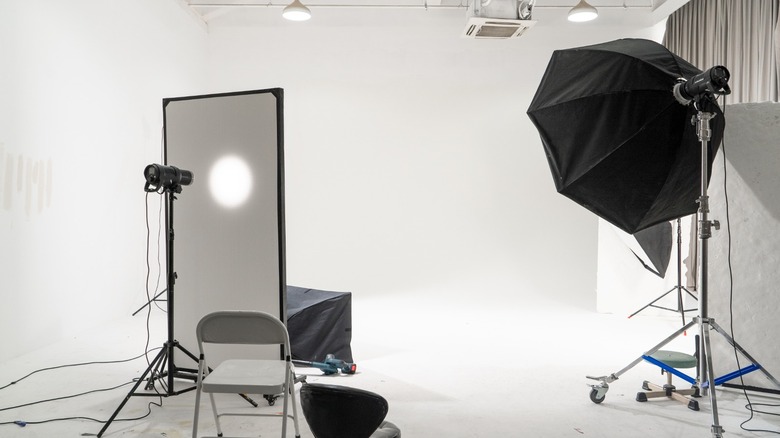What Is Medium Format Film And When Is It Better Than 35mm?
If you're getting into film photography and have been doing some research, you might have encountered 120 medium format film. This larger roll of film is designed for medium format cameras, hence the name medium format film. This type of film is significantly larger than the 135 film used in 35mm cameras, and many professional studio photographers swear by this format. Although the 35mm film format was one of the milestones in the history of photography and overshadowed medium format film, the latter has stayed popular enough to remain in production to this day.
It's for this reason that some hobbyists would choose a medium format film camera over a 35mm film SLR. Nevertheless, medium format cameras do have a few disadvantages, particularly in the size department. Since 120 film is physically larger than 135, medium format cameras are larger and heavier than 35mm cameras. The larger size also means that it takes more material to build the lenses and cameras, making them more expensive.
Despite those drawbacks, medium format films have a few characteristics that may make you want to use it over the 135 film used in 35mm cameras. So, these are some of the situations that makes medium format film the better option. Note that you cannot interchange the types of films used on a camera — so, if you have a 35mm camera, you can only use 135 film in it, and if you have a medium format camera, it will only accept 120 medium format film.
You wish for a bigger negative
As we said earlier, 120 film is physically larger than 135. Here's a size comparison of the two: the 35mm camera with 135 film creates negatives that measure 24x36mm, and it's the basis of the sensor size of full-frame digital cameras (which are larger than the more affordable cropped-sensor digital cameras). On the other hand, medium format film has a 56mm height — more than double that of 35mm film. The width of the 120 film varies between cameras, with the 6x4.5 format (56x42mm) among the most common size. However, some medium format cameras take larger images, allowing you to get a negative as large as 6x17 (about 56x158mm).
The physically larger negative gives you much higher quality than the 35mm film. This is especially crucial if you plan to blow up the images you take to billboard sizes; that's why many studio photographers stick to medium format cameras for professional work. This remains true today, even with the proliferation of high-quality full-frame mirrorless and digital SLRs. That's why manufacturers make medium format digital cameras, like the Fujifilm GFX 100S II or the Hasselblad X1D II.
You need higher quality
Aside from the higher quality you get with a larger negative, medium format film also has some qualities that can make it superior to 35mm film. The bigger size of the former gives it finer grain, allowing you to get a cleaner photo. Although grain can sometimes be used to evoke nostalgia and add some drama to an image, it can also be unwanted by photographers who need high detail and clarity.
The fineness of 120 film can lead to sharp, highly defined images, which can be especially crucial for studio work and portraitures. This is also why some professionals prefer to stick with medium format film for architecture and fine art photography — to ensure that their camera captures every unique detail, shape, and texture from the scene.
The larger negative also allows the photographer to capture more tonality. This means their images are less likely to lose details in the highlights (bright, white areas) and shadows (dark areas) of the scene. This also helps in post-processing, as the photographer can use darkroom techniques to reveal detail that would have otherwise been lost with the smaller 35mm film.
You desire a shallower depth of field
Another advantage that the larger negative gives photographers is a shallower depth of field. This means you can make your subject pop out more from the background and get creamier background bokeh.
Medium format film is able to achieve this because of its larger size, which requires a larger lens and opening for the same exposure that you'd get with 135 film. That means you get a shallower depth of field for the same aperture when compared to a 35mm camera. For example, a lens with a 50mm focal length and a f/2.8 aperture on a 35mm camera would offer the same field of view and depth of field as a 65mm, f/3.5 lens on a 6x8 medium format camera. So, a medium format lens that's marked as 50mm, f/2.8 would offer a wider view and shallower depth of field versus a 35mm lens with the same numbers.
This characteristic makes medium format film highly suitable for portraits, where you can focus on your subject's eyes and use depth of field to make that the focal point of your image. Shallow depth of field is also useful for letting finer details appear more prominently on your image, that's why the lenses I recommend for product photography often have wide apertures or can be zoomed in to deliver the same effect.
You want different camera formats
When it comes to 35mm film, it can typically only be used in a few camera options, like single-lens reflex (SLR) cameras, rangefinders, and point-and-shoot cameras — all of which typically require you to look through an eyepiece and shoot images in the 24x36mm aspect ratio (except for the EKAT H35 half-frame camera, one of the best point-and-shoot film cameras available today).
If you look at medium format film cameras, you get a lot of options. There's the SLR camera, which is exactly like the 35mm version, except that you have larger film. There's the twin-lens reflex (TLR) camera, which usually has a large viewfinder that you look down into, allowing you to shoot from waist-level and be more discreet. And then there's the system camera, which are SLRs, but are modular and highly customizable.
There are also the older folding medium format cameras and box cameras, both of which are essentially older point-and-shoot cameras that use 120 film. Of course, we cannot forget the trusty rangefinder and the "modern" point-and-shoot camera, which are also available in 120 film, if you know where to find them.
You seek more aspect ratio options
Depending on the camera model, you can get a variety of negative sizes with medium format film. There's the popular 6x4.5, but other camera makers also released medium format cameras that shoot 6x6, 6x7, 6x8, 6x9, and 6x17 negatives.
You'll usually know what aspect ratio a camera shoots by the numbers in its model name. Pentax 645 cameras shoot in 6x4.5, while the Mamiya RB67 shoots 6x7 negatives. These cameras all use 120 film, since the height, 56mm, is standard. It's the length of the captured negative that will vary, with 6x4.5 shooting 15 to 16 frames per roll, while the larger 6x9 aspect ratio only offering eight frames on a single 120 roll.
These different aspect ratios give photographers more creative freedom, as you don't have to stick with the usual 4x6 images that 35mm film creates. Some examples of this include the 6x4.5 aspect ratio, which lets you shoot portraits without needing to rotate the heavy medium format camera to its side. There's also the 6x6 square ratio that offers unique photographic layouts you won't find possible elsewhere without cropping.
You have a studio or don't mind the larger gear
One of the biggest drivers of the popularity of the 35mm film camera is that they're smaller and generally cheaper. But if you have a studio where you specifically take photos, don't mind working with bigger and heavier equipment, or even have an assistant to help you out, you don't have to worry about the size of the medium format camera.
Medium format cameras tend to be heavier than their 35mm counterparts. The larger negative means you need a larger camera to accommodate it. The larger camera requires larger lenses, which require heavier glass. All of this adds up to a lot of weight, so if you shoot outside a lot, you'll have to consider that.
If you have someone bringing your gear for you, like a photographer's assistant (one of the positions I worked at when I was still shooting weddings), then this wouldn't be much of an issue. Or if you primarily use the medium format camera in a studio, then you'll love the higher image quality you get from it without worrying about the weight of your gear. But if you carry your own gear and shoot outside or on location a lot, you should consider the massive downside of heavy equipment and see if it's worth the tradeoff of better image quality.
